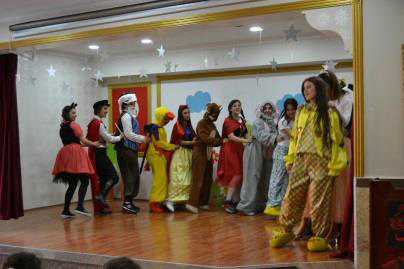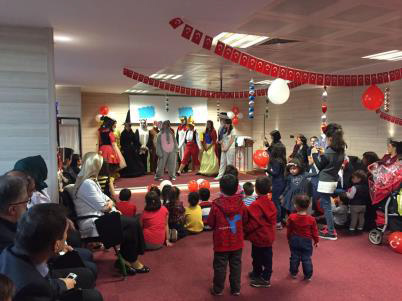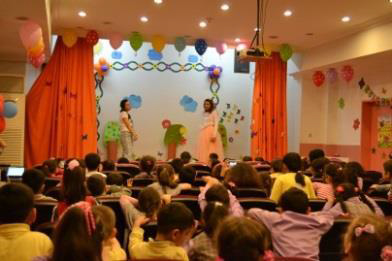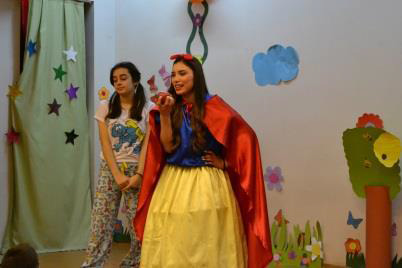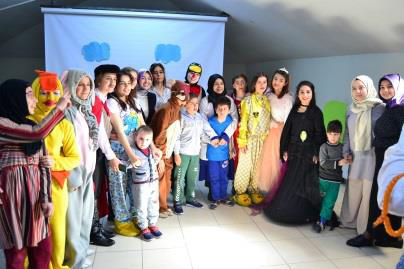Interview to İbrahim Turhan Çok Programlı Anadolu Lisesi
Director: Selahattin Dal
Project: Colorful Stories
-
1. How was this project born: from which needs? To answer which question?
Rather than fighting the advancing technology and the disadvantages of the developing world to adapt the quality of education, adapting them to education and developing training methods that are appropriate to the needs and expectations of new generations should be accepted as the most important responsibility of education institutions through our educators.
This is aimed at gaining spiritual values such as social responsibility, helping, volunteering at the same time that the learners’ permanence is achieved while the students achieve their achievements.
-
2. What is in your opinion innovative on this project?
In this project, the students of our school will be able to use the fairy tale and cartoon characters, animal costumes and accessories they have prepared with the materials as little as possible within the scope of the “Dramatic Activities” and “Early Childhood Program” lessons, theater plays with the guidance of their teachers, Dramatic Activities and Early Childhood Program Exhibited their improvisation, role playing, creative dance techniques in their lessons
-
3. Which are in your opinion the ICT competencies of adolescents that are important for your project? And how are they valorised through your project?
Students research about characters they choose to undertake the project from the internet.
-
4. What did your discover through the project that you didn’t expect or imagine?
It has been observed that the students who are participants of the project in the project have learned, learned and experienced by the high level acquisitions to catch the persistence of the learners, while at the same time the development of business association, cooperation, social responsibility and volunteer awareness have been observed.
-
5. What is the link between your project, media competencies and active citizenship?
In this project, students are working as a volunteer. As a social responsibility project, they help people who need help.
EXPERIENCE REPORTING
-
1. What happens during activities? Which working steps are asked from the students?
The students who will take part in the project have been determined on the basis of volunteering and prepared for the theater display under the guidance of the field teachers. When the project team costumes became ready with stage performance and performance, students were brainstormed about who the theater display could be done with.
-
2. Which methodologies do you use?
They have also used the drama method of demonstration, improvisation, role playing, creative dance.
-
3. Which tools?
Projection, Indesign
-
4. Which materials?
Costumes, Accessories, Posters
-
5. Which project choices do you consider strategic?
The team made poster and brochure designs as part of project visibility studies and shared news about the project in the school’s social media accounts.
-
6. How do you arouse curiosity in the teenagers?
The project offered the opportunity to meet the theater where we can qualify as an effective stimulus in sociocultural sense by offering equal opportunity to children in different disadvantage groups.
-
7. What do they learn?
It is expected that the students who are participating in the project will learn what they learn from the field and that they will acquire the permanence of the learners thanks to the high level acquisitions.
-
8. Which competences are developed and enhanced?
It is aimed to develop cooperation, cooperation, social responsibility and volunteer awareness.
-
9. Which are expected results and those effectively attained?
The result is that the project is not participating, it is the area and the students who are willing to participate in the project thanks to their visibility activities, the project has a multiplier effect, it is effected not only on the participant group but on all the field students and even the whole school.
-
10. How do you evaluate this experience? Do you evaluate it at all?
By making individual interviews with the students at certain intervals, the deficiencies were eliminated. In addition, according to the feedback from the students, the project has been improved .
-
11. When things don’t work out, how do you readapt activities?
Most of the students wants to join the project because this is like a game for them and they already motivated. So we don’t need to readapt them.
